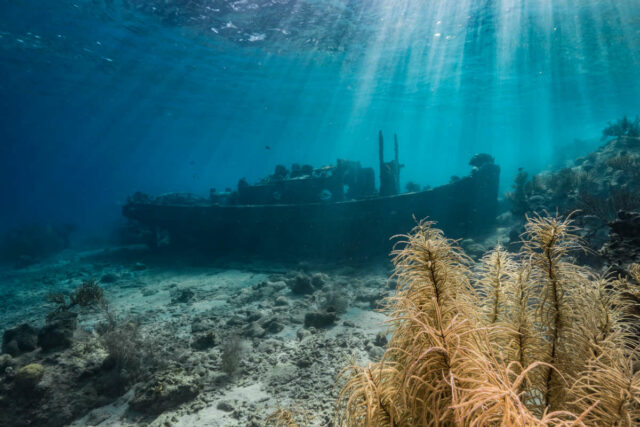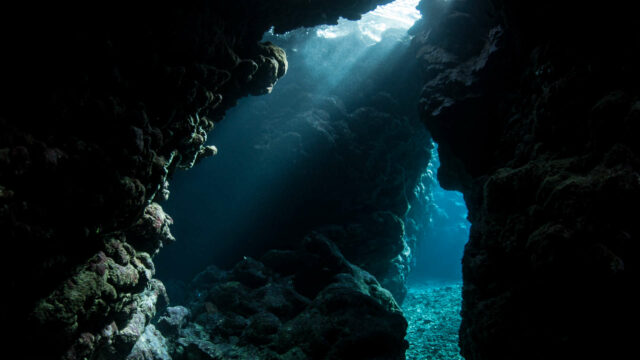
The wrecks that lie on the bottom of the sea are authentic fragments of the past: timeless monuments guarded for eternity by the silent waters of the sea.
Each wreck has its own particular story, sometimes tragic, that has brought it down onto the sea bottom to be covered with algae, becoming the home to fish and other sea creatures and slowly succumbing to rust and the passage of time itself.
At the same time, these wrecks offer a spectacular vision that fascinates divers, attracting both professionals for study purposes and aficionados looking for adventure.
All over the world are numerous wrecks accessible to divers with the aid of an underwater scooter.
The navigation function of these DPVs is particularly useful for reaching the wrecks, and can significantly simplify decompression, especially with a current.
So let’s set off to discover some of these underwater shipwrecks.

First stop, the American continent. Just off the Cayman Islands is the USS Kittiwake, a US military ship specialised in underwater rescue that served the US Navy from 1946 to 1994; in 2008, ownership was transferred to the Cayman Islands with the intention of scuttling it to make it into an artificial reef. Measuring 76 metres long and with five levels, the Kittiwake now lies 20 metres below sea level, making it a very popular destination with diving fans.
Near the coast of the Virgin Islands in the Caribbean is la RMS Rhone, lying at a depth of 24 – 9 metres since a hurricane sank it in 1867, along with its 127-man crew. Despite the 150 years it has spent on the sea bottom, the wreck is still well preserved, with its surface covered by multi-coloured coral reefs inhabited by splendid fish.
In the African continent lies the Umbria, an Italian ship that sank in the Red Sea in 1940: originally built in 1911 as a luxury vessel, it was reconverted to transport troops in the 1930s, and was sunk by its captain in 1940 to prevent the Allies from taking possession of its payload of 360,000 bombs. Today it lies at a depth of 36 metres, and its sheltered position has allowed for the development of a rich marine ecosystem.
Also in the Red Sea lies the SS Thistlegorm, a merchant ship launched in 1940 and sunk in 1941 when it was bombed by the Germans: the maximum depth of the wreck is 30 metres, which makes it easy to explore for divers, who can even reach the holds that still contain the ship’s load of military weapons and vehicles.
In the Pacific, divers can explore the SS Yongala, sunk by a hurricane in 1911 in the waters off Queensland, Australia with a total of 122 passengers and crew: the wreck of this steamship is exceptionally well preserved, and is home to one of the largest coral reefs in Australia, at a depth of 28 metres from the surface.
From the little republic of Vanatau, in the Pacific, it is possible to reach the SS President Coolidge, a luxury passenger ship that sailed from 1931 to 1942: the depth of 33 metres and size of the ship – over 200 metres long, with a number of decks to explore – make it a very popular attraction for divers, who can swim through the corridors the passengers once walked.
SUEX underwater scooters are suitable for long-range dives, both recreational and technical, offering a new way to explore underwater shipwrecks, as well as advanced navigation systems: find out more about our DPVs and contact us for more information.



